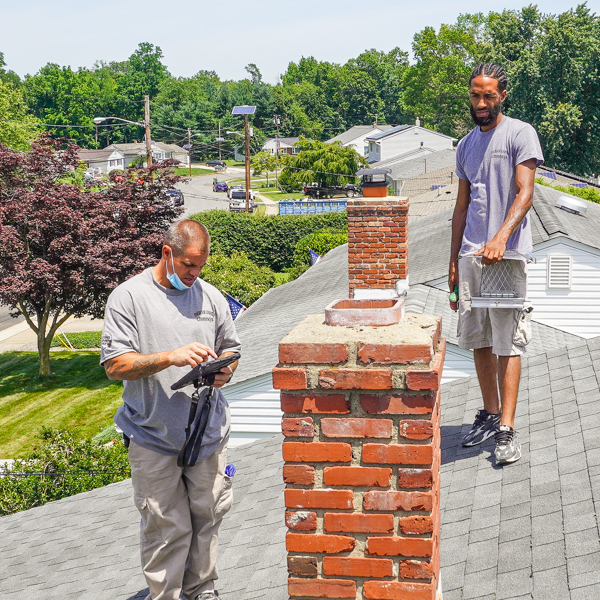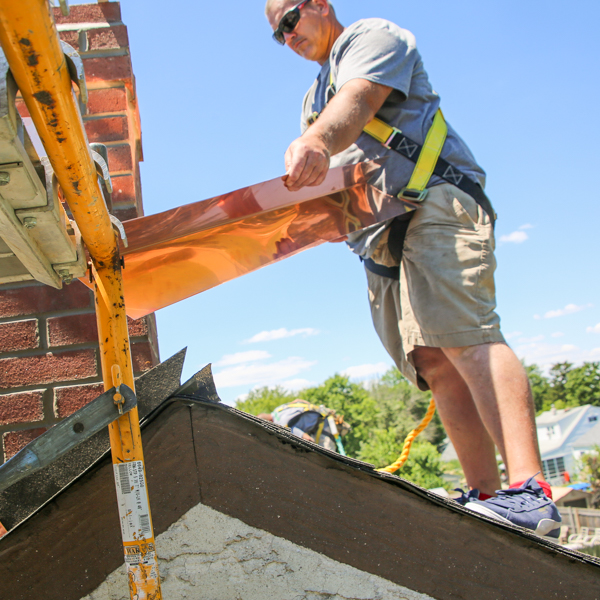Do You Have These 7 Common Chimney Problems
Back in 1736, Benjamin Franklin coined the catchy phrase, “An ounce of prevention is worth a pound of cure” to promote fire prevention. That statement rings true today and is why we encourage annual chimney inspections and cleanings to every homeowner in Princeton, NJ, and surrounding communities. In fact, fire prevention is the number one priority of our certified chimney professionals. To ensure your chimney and fireplace are safe to operate, it’s important to find out if you have any of these seven chimney problems.

Chimney Crown Cracks
The cement chimney crown tops the entire masonry structure and typically has a drip edge to help deflect water off the chimney. However, normal wear and tear, rainstorms, and house settling can cause cracks to develop in the porous surface. When rainwater leaks through these tiny cracks, it can damage the masonry walls and flue liner. Water damage also promotes mold and mildew growth which can reduce indoor air quality. When caught early, our chimney professionals will reseal the crown to stop the leaks. More severe damage may require rebuilding the chimney crown, costing more money.
Excessive Creosote
The most common chimney problem affecting many chimneys in New Jersey is excessive creosote. Initially, creosote is a powdery substance that is relatively easy to remove with regular chimney sweeping. However, when it remains in the chimney, more creosote continually builds upon the damper, smoke chamber, flue liner, and other areas. Eventually, it hardens into a dark, crusty, tar-like substance that is highly flammable. The fire’s high temperatures or a hot ember can spark a chimney fire that can potentially spread to other parts of the house.
Damaged or Missing Chimney Cap
Years of exposure to frequent rains, pounding hail, and wind gusts can damage the chimney cap or cause it to fall off the roof. The chimney cap’s primary purpose is to keep rain and snow from dripping into the flue while the fireplace keeps your family toasty. It also helps shield your fireplace from dangerous downdrafts on windy days. Many chimney caps also feature a mesh screen that prevents twigs, leaves, and pesky wildlife from getting inside the chimney, obstructing the venting of smoke and harmful fumes. In addition, a built-in spark arrestor keeps hot embers from landing on the roof and potentially starting a fire. Therefore, the chimney cap should be inspected regularly and replaced when damaged or missing.
Live Animals/Nests
During the winter, small animals like sparrows, raccoons, and squirrels often find chimneys a warm and comfy place to rest, have a bite to eat, and build nests away from predators. In addition to blocking the flue, birds’ nests are combustible. Lighting the fireplace when there are nests in the chimney can cause a fire that can also fill your home with smoke and carbon monoxide fumes. If you suspect live animals or nests in the chimney, don’t use the fireplace and contact a Certified Chimney Sweep® to remove the animals and clear flue obstructions.
Spalling Bricks
Spalling bricks are a common chimney problem. You can usually tell your chimney has a spalling brick problem if you see flaked, chipped, or missing bricks and mortar. You may also notice brick pieces on the ground near the chimney. It occurs when the absorbed moisture in the masonry freezes, causing the bricks to crack as the ice crystals expand. The frozen bricks thaw when the temperature rises, and water fills the ever-expanding cracks during the next precipitation event. The continuous freezing/thawing throughout the winter months can cause considerable masonry damage. Spalling bricks slowly deteriorates the chimney’s structural integrity and ultimately leads to a partial or complete chimney collapse, requiring a full or partial chimney rebuild.
Flue Liner Cracks
Flue liner cracks are not uncommon, especially in homes with clay tile liners. Normal wear and tear, intense temperatures, and moisture can cause the liner to deteriorate, causing it to crack. You may also notice pieces of clay material in the fireplace. Even a small flue liner damage can cause significant problems that can lead to extensive chimney repairs. Flue liner problems also increase the chance of fire and carbon monoxide exposure. We typically recommend installing a heavy-gauge stainless-steel chimney liner to protect your home and chimney.
 Flashing Damage
Flashing Damage
The chimney flashing is another common problem that can lead to a leaky chimney. The metal flashing is supposed to create an airtight seal where the chimney and roofline meet. However, it can warp or corrode over time, exposing the chimney to water leaks that can damage the attic, roof deck, ceiling, and walls. Contact a professional chimney sweep to inspect the flashing if you notice water stains on the ceiling or walls around the fireplace.


